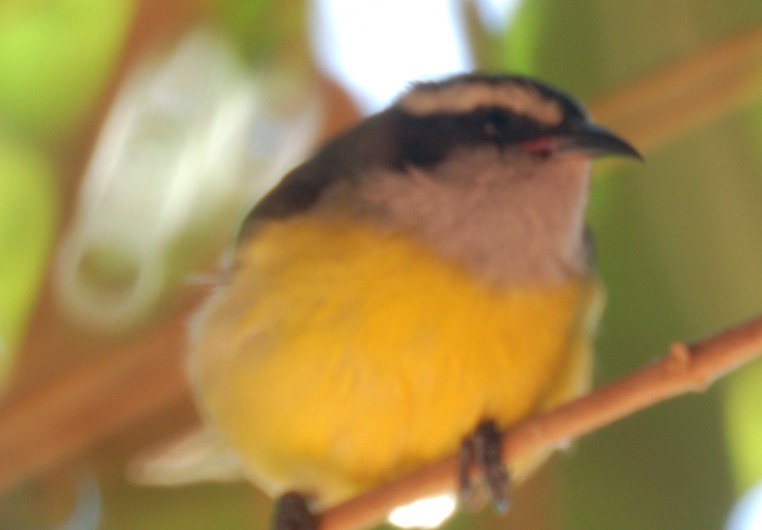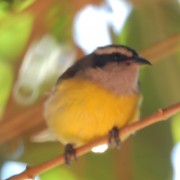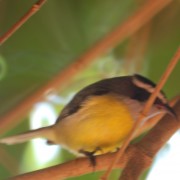Biodiversity
 Bananaquit
Coereba flaveola | Linnaeus, 1758
Bananaquit
Coereba flaveola | Linnaeus, 1758

Characterization: Small species measuring about 11cm in length. It is easily identified because it is so small, for its plumage displaying a white eyebrow bordered in black, a dark gray back and head, light gray neck and chest and yellow belly.
Distribution: Tropical America, from Mexico and the Guianas to Argentina.
Habitat: All types of secondary forests.
Habits: A diurnal species, this bird lives alone or in pairs and is quite active, searching for food at all times of the day and often hanging with its head or back down, firmly clinging on with its sharp nails. It builds a nest to rest in and spend the night; this nest is smaller than the one it builds for breeding, which is loosely set and has a low, wide entrance.
Diet: Mainly nectar.
Breeding: This bird lays 2-3 eggs in relatively high and well-finished nests, with thick walls and small entrances made at top and directed downwards, covered by a long, overhanging cover approaching its base and completely sealing its entrance.
In the UFRA area: This species of bird has a broad spatial distribution. It was found in exotic woods, wetlands with herbaceous plants, wetlands with riparian forests, in restored native forests, in mixed forests in regeneration, and in native forests. It is considered infrequent, as it was spotted only eight times.





